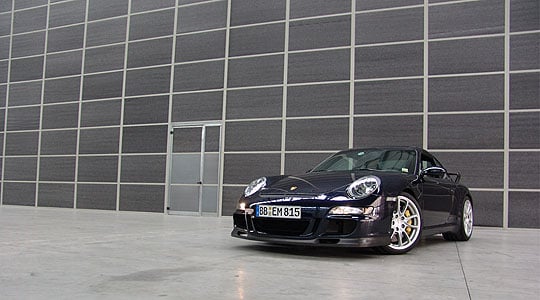
The most pure Porsche is not the Turbo, but the recently announced GT3. Its boxer motor revolves at speeds previously unheard of and pushes the performance barriers yet further still. We had a day with the latest car.
What a perfect picture: smartly trimmed laurel bushes flank the car park of the Hotel Villa del Quar, while sunshine blazes strongly on the four blue stars of the brass plate welcoming visitors to the southern entrance of the country house hotel – Spring has sprung in Northern Italy.
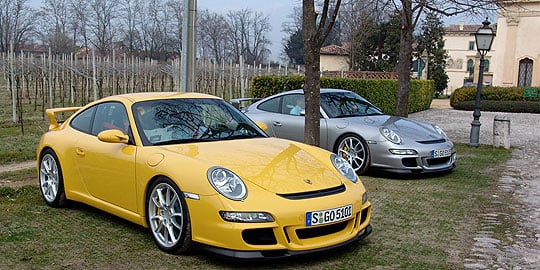
Porsche has provided yet more colour for this scene of arcadian bliss. Twelve GT3s line up in carefully arranged rows for sampling at the test track, as well as the roads of Lombardy, Venice and Trentino.
"Where are the ignition keys please?"
“Please, Gentlemen, the conference begins!” The concierge summons us to a technical lecture in what must have once been a barn in the country house. Typical Porsche – work must come before pleasure. My colleagues of the national press start muttering, where are the ignition keys!
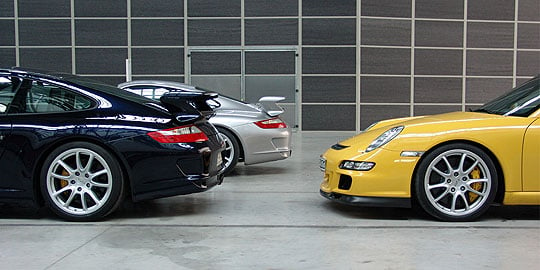
Calm down. Porsche’s project manager tasked with the GT3, Andreas Preuninger, explains the thoroughness of the latest model’s design. In particular the air flow management that means radiator air is exited over the top of the car rather than underneath and causing lift.
"Dry-sumped Tourbillon"
Ok, let’s have that in English. The secret of the new GT3’s performance lies in the variable intakes, optimised cylinder heads and a low back pressure exhaust system that allows the all-aluminium flat-six to rev to 8,400 rpm. Four cams, 24 valves and titanium con-rods and dry-sumping make this engine the automotive equivalent to the tourbillon that ‘powers’ the finest luxury watches. In the Porsche, the GT3’s motor is pushing out 415 HP at 7,600 rpm.
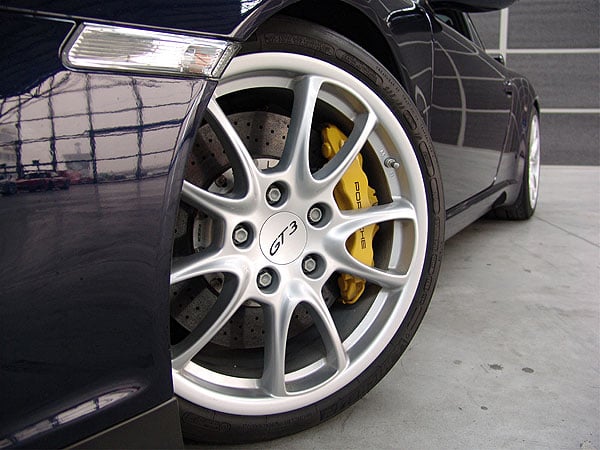
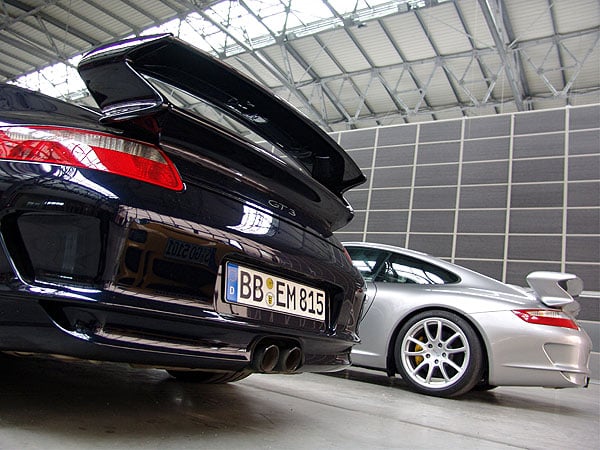
The noise the GT3 makes is a little stronger than the gentle tick of a Rolex. In the covered car park the sound resonates like no other. Metallic, strong and dominating.
Acceleration like in free-fall

The power of the engine is transmitted via a modified (shorter ratios) six-speed gearbox and 19” (with 305/30 ZR 19 tyres) wheels. The effect of opening the throttle is devastating. 0 – 100 km/h (62 mph) comes up in just 4.3 seconds, and 160 km/h (100 mph) another 4.4. Top speed is 310 km/h (192 mph).
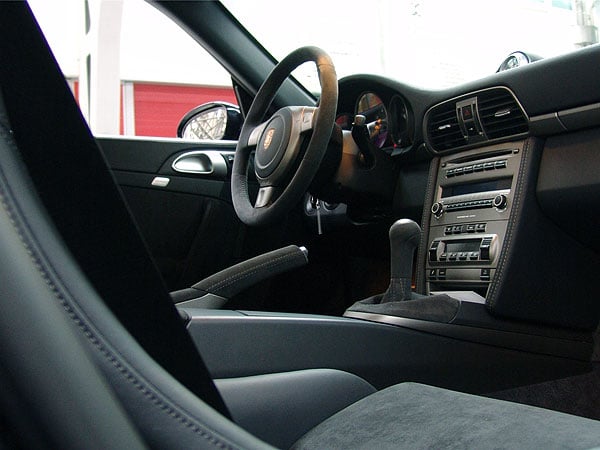
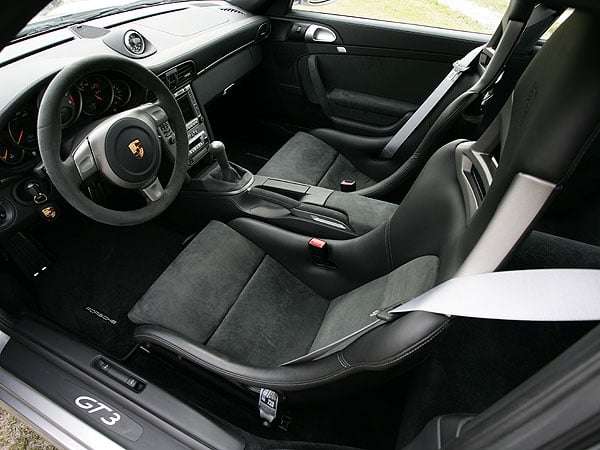
“No more questions!” cry the assembled journalists, as their chairs scrape impatiently on the terracotta tiles. It’s time to grab the keys and go for it. The test car’s indicators blink obligingly as I press the key fob to unlock the car. Unsurprisingly it is exactly like its ‘standard’ brother. Only a couple of give-aways like the Alcantara-trimmed steering wheel and 9,000 red-lined tacho show it’s a more special version.
And the fact the car does not have proper seats, merely hard ‘shells’ in Alcantara that once you have snuggled down into seem to be impossible to get out of again. I am sitting so deep in the car I look for some vertical adjustment but, no, this is all you get. I am glued into the car.
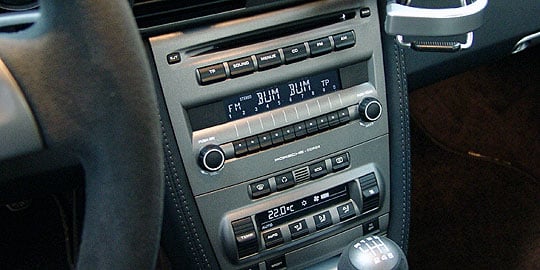
Six cylinders wait for their marching orders
But not to worry, for as soon as I turn the key and fire up the boxer-motor, the vibrations from the growling engine behind me make the effort worthwhile.
Easing the car gently out of the hotel’s grounds I spare a thought for the gardening staff. This long gravel drive, how much effort have they spent on keeping it swept neatly? I must control myself until out on the open road.
Joining the convoy of cars heading east to the local Adria circuit I can now start enjoying the GT3.

“Not bad!” says the Italian on the gate at the race circuit as he opens the barrier to yet another new 911. But the local weather gods have other ideas. As the heavens open we roll into a large hanger and await one of the very best drivers in such conditions – multiple rally champion, DTM and sportscar specialist Walter Röhrl. As a taxi driver (ironically in a yellow car) there is no better. Obeying the order “strap yourself in”, and who wouldn’t?, I await a few laps with one of the masters.
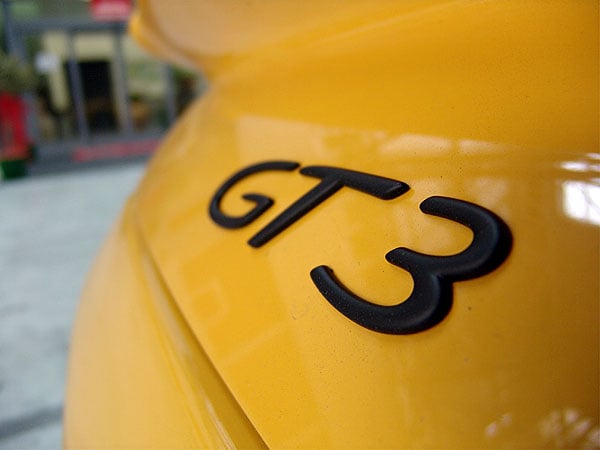
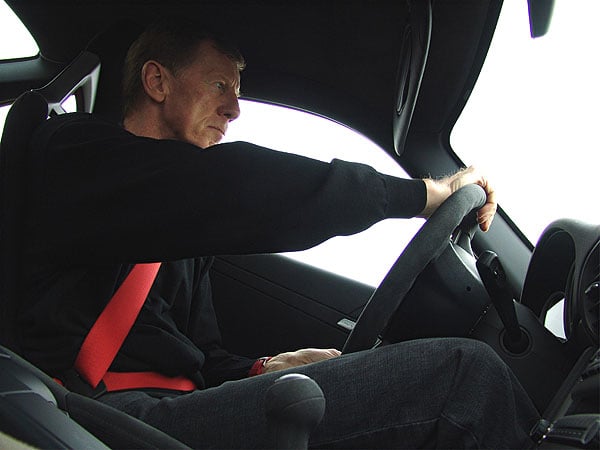
A quick press of a button eliminates all driver aids and makes the already stiff chassis rock hard. At the end of the pit lane Röhrl let’s the car go and Bang! my helmet hits the head rest as if the Porsche has been struck by a sledgehammer. The engine’s no longer growling – it’s roaring as Röhrl clicks up and up through the gears. In the time it takes to read this paragraph the GT3 is hitting 200 km/h. In the wet. It’s unbelievable.
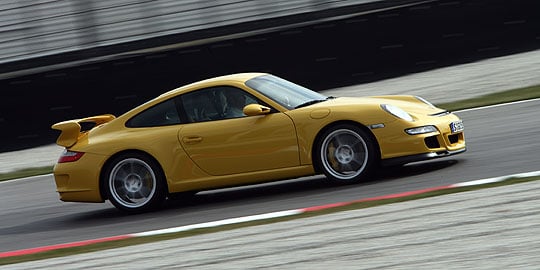
But the race track has curves too of course. Quite a lot in fact, and guard rails, so every now again the driver must slow down and turn. The brakes (ceramic) work like glue, we’re down to 100 km/h for a tight curve and despite me thinking this is much too fast Röhrl has the car sideways and quickly up to 200 km/h again. Each bump goes straight through to my spinal cord and I’m feeling bones I did not even know I had. At 4,000 rpm auxiliary valves open in the exhaust and you think the motor is actually beside us in the cockpit. Moving – and even thinking – is difficult as the world rushes by.
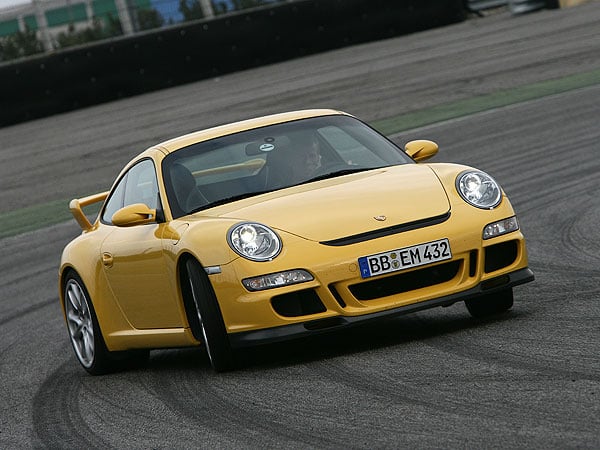
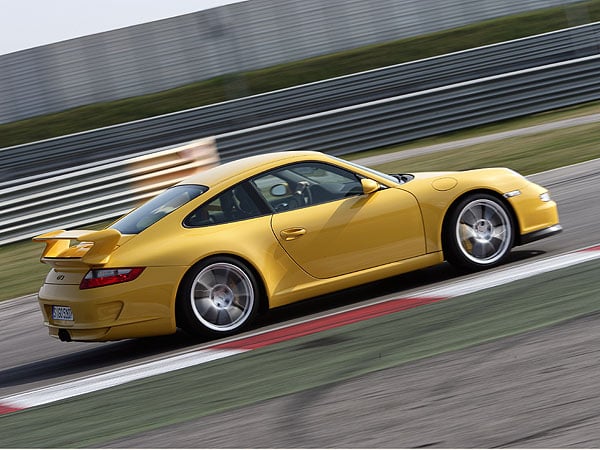
It’s soon over however and the car trickles back to the pits. As we drive slowly round the circuit I have time to look at how near to the track is the Armco and gravel run-off. It’s close, and it shows how good the car (and driver) is that we circulate so fast yet so safely.
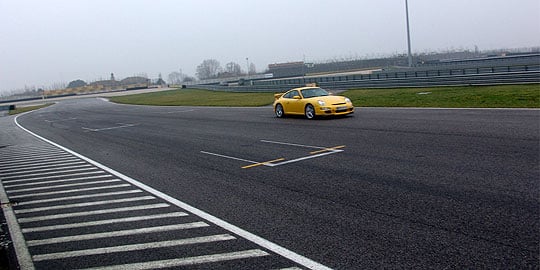
On the return trip the Villa del Quar I remember some more words from the Porsche technician “The GT3 has, as standard, air-conditioning and a CD player”.
At 108,000 EURO is should do, but after such a ride on the circuit with Röhrl I’m really not interested.
Text: Mathias Paulokat
Photos: Mathias Paulokat / Dirk Weyhenmeyer
ClassicInside - The Classic Driver Newsletter
Free Subscription!
















